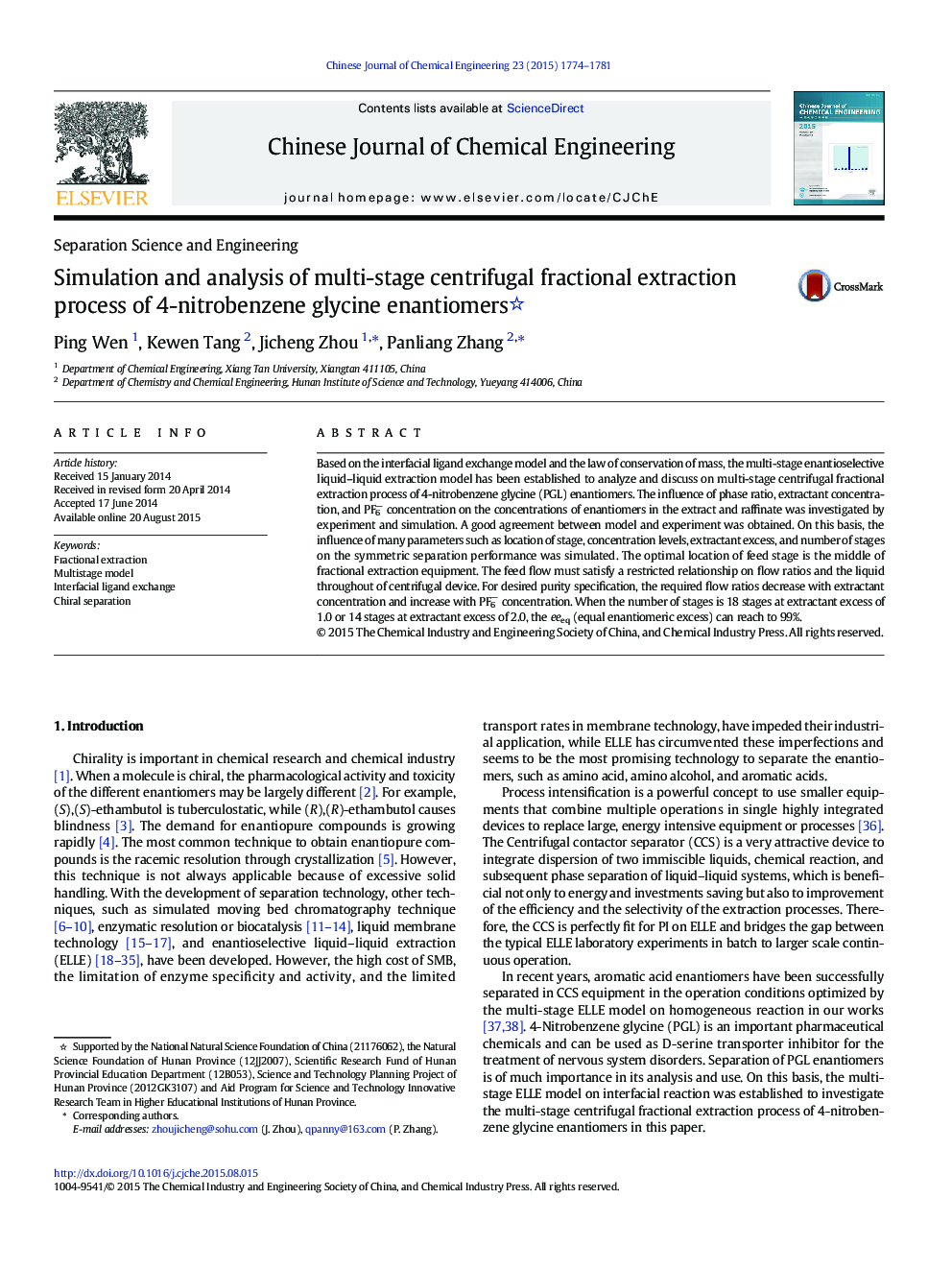| کد مقاله | کد نشریه | سال انتشار | مقاله انگلیسی | نسخه تمام متن |
|---|---|---|---|---|
| 167955 | 1423394 | 2015 | 8 صفحه PDF | دانلود رایگان |

Based on the interfacial ligand exchange model and the law of conservation of mass, the multi-stage enantioselective liquid–liquid extraction model has been established to analyze and discuss on multi-stage centrifugal fractional extraction process of 4-nitrobenzene glycine (PGL) enantiomers. The influence of phase ratio, extractant concentration, and PF6− concentration on the concentrations of enantiomers in the extract and raffinate was investigated by experiment and simulation. A good agreement between model and experiment was obtained. On this basis, the influence of many parameters such as location of stage, concentration levels, extractant excess, and number of stages on the symmetric separation performance was simulated. The optimal location of feed stage is the middle of fractional extraction equipment. The feed flow must satisfy a restricted relationship on flow ratios and the liquid throughout of centrifugal device. For desired purity specification, the required flow ratios decrease with extractant concentration and increase with PF6− concentration. When the number of stages is 18 stages at extractant excess of 1.0 or 14 stages at extractant excess of 2.0, the eeeq (equal enantiomeric excess) can reach to 99%.
Based on the interfacial ligand exchange model and the law of conservation of mass, the multi-stage enantioselective liquid–liquid extraction model has been established to analyze and discuss on multi-stage centrifugal fractional extraction process of 4-nitrobenzene glycine (PGL) enantiomers. The influence of phase ratio, extractant concentration, and PF6− concentration on the concentrations of enantiomers in the extract and raffinate was investigated by experiment and simulation. When the number of stages is 18 stages at extractant excess of 1.0 or 14 stages at extractant excess of 2.0, the eeeq (equal enantiomeric excess) can reach to 99%.Figure optionsDownload as PowerPoint slide
Journal: Chinese Journal of Chemical Engineering - Volume 23, Issue 11, November 2015, Pages 1774–1781